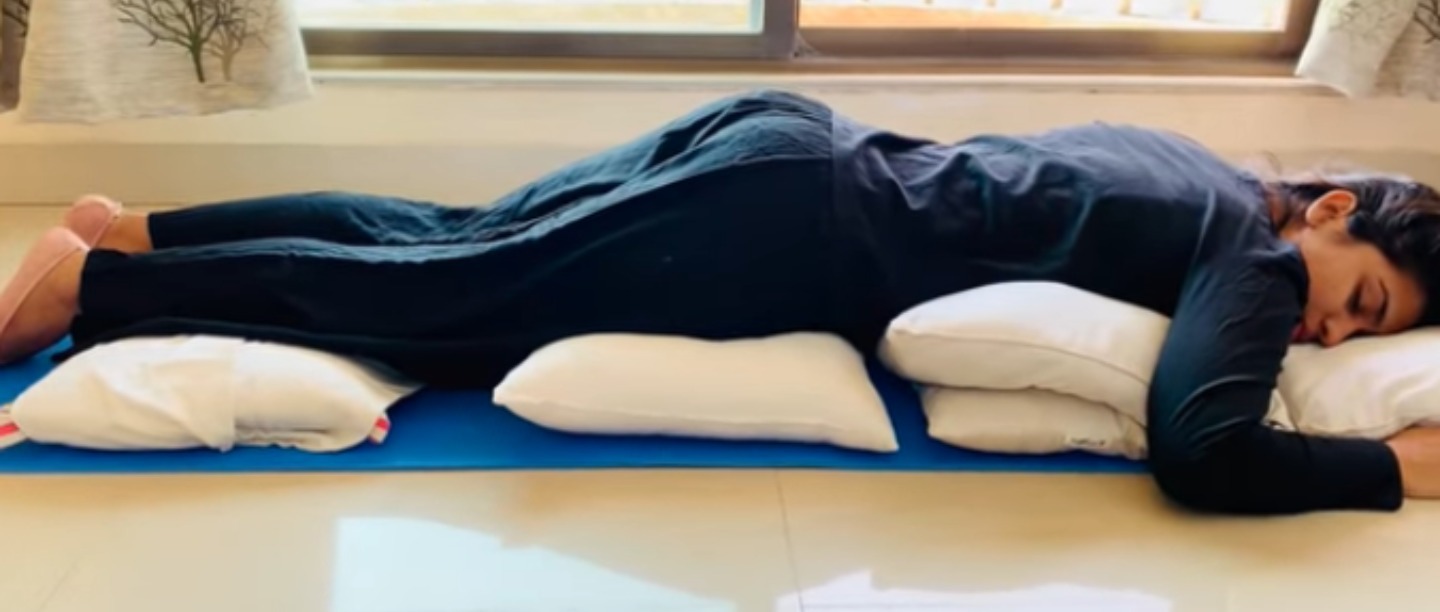The scariest thing about a COVID-19 infection is that it can severely impact lung function for some patients. We need our lungs to pump in oxygen and an impaired lung function means lack of oxygen. This is exactly why a lot of patients need oxygen cylinders and ventilator support after their COVID-19 infection.
Amid it all, a lot of experts have been swearing by the benefits of proning, a sleeping position that can apparently do wonders to your oxygen saturation (SPO2 levels). Recently, the Ministry of Health and Family Welfare (MoHFW) also advised proning for home care amongst COVID-19 patients, stating that it is “extremely beneficial” for them.
Amid increasing COVID-19 caseload and depleting hospital resources in the country it is important that we have a strong home care strategy in place. Knowing how to prone is definitely an important part of the same. Thus, to help you prepare for a COVID-19 crisis at home, we recently reached out to Dr. Harish Chafle, Consultant, Pulmonology and Critical Care, Global Hospitals Mumbai. We asked him everything about the life-saving technique of proning including the technicalities to do it right. Excerpts below.
What Is Proning?

Proning is a sleeping position that requires you to lie on your tummy. As Dr. Chafle explains, “In supine (lying on the back) position, the major part of both lungs is occupied by the lower lobes. In the prone position the part goes to the upper side where air by its nature goes up always. So when we sleep in the prone position, the majority of the lungs get properly aerated which doesn’t happen if we sleep in supine position.”
The prone position helps us by opening up the lower lobes of both the lungs and thus improving oxygen levels. It makes it way easier for COVID-19 patients to breathe.
The Right Proning Position & Tips To Keep In Mind
Now that we have learned the importance of proning during a COVID-19 infection, the next step would be learning how to do it right. Dr. Chafle explains, “The right way to do proning is by putting two pillows below the chest, two pillows below the pelvis, and one pillow below the head. Your tummy should be able to expand in the space created in between.”
However, that is just one of the proning positions. To do it with perfection, you would be required to keep changing your positions. Here is a detailed guide for the same:
The Ministry of Health and Family Welfare (MoHFW)
Here are some other things that you need to keep in mind while proning:
When To Prone?
The patient requires to prone only when their SPOs levels go below 94. You are required to keep a check on the SPOs levels with the help of an oximeter.
Duration
Aim to remain prone for a four-hour period. Allow one-hour comfort breaks between periods of proning for drinking, toilet, and general comfort.
Positioning
You will need one soft pillow below the head, substantial pillows for under the chest, one or two pillows for under the pelvis and one or two pillows under the shins. The abdomen should hang free and not be compressed. This is even more important in obese patients.
Warning
It is important not to prone for at least one hour after having a meal. Pregnant women, people with major cardiac conditions, and those with an unstable spine, femur, or pelvic positions should avoid the prone position.
Experts suggest that the proning position has done wonders for a number of COVID-19 patients and helped them with a speedy recovery. However, it is important that you reach out to a medical expert if the patient’s condition does not improve and they are showing severe COVID-19 symptoms.
Featured Image: YouTube





